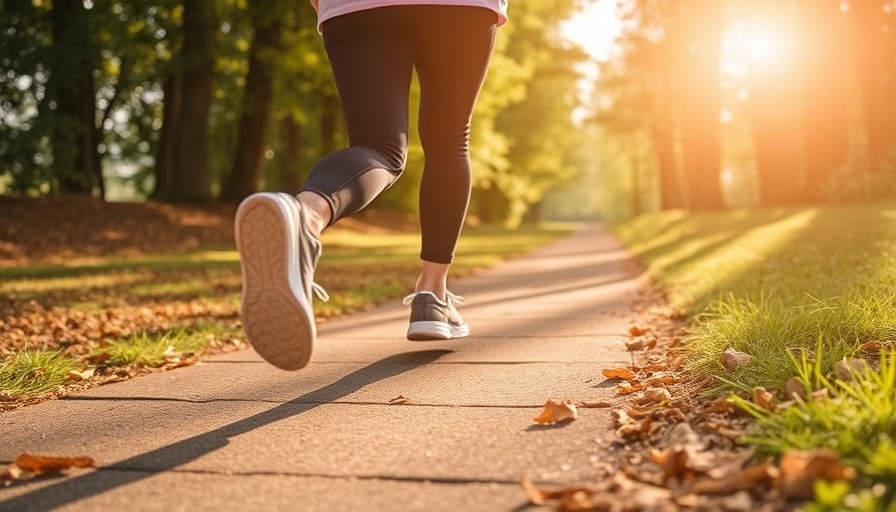
Rethinking Step Counts: What You Need to Know
Have you ever paced around your living room just to hit that elusive 10,000-step mark? The number has been ingrained in our culture as the golden standard for health and fitness, but research suggests a more flexible approach is necessary. It's important to understand that while aiming for certain daily step counts can certainly contribute to weight loss, individual circumstances greatly influence what that number should be for you.
The Myth Behind 10,000 Steps
Surprisingly, the iconic 10,000-step goal is less about hard science and more about marketing. It originated in the 1960s from a Japanese company that launched a pedometer called the "manpo-kei," translating to "10,000 steps meter." The catchy number caught on, but we need to challenge this notion. Studies have found that just 7,000 to 8,000 steps can still promote health and aid weight loss, especially for those just starting on their fitness journey.
Understanding Your Unique Needs
When it comes to how many steps you need to lose weight, it becomes a question of personalization. Factors such as your weight, age, baseline activity, terrain, and diet all come into play. For some, walking at a leisurely pace may suffice, while others might require more vigorous activity. The right approach takes these variables into account, resulting in a tailored plan that satisfies your health goals.
The Power of Regular Walking
While walking alone might not yield dramatic weight loss, it can substantially support your overall health journey. Embracing walking as part of your daily routine enhances its benefits. Pairing walks with healthy eating and sleep can amplify calorie burn, leading to improved fitness and a sustainable weight loss journey.
Brisk Walking Versus Casual Strolling
To maximize the benefits of your walking regimen, consider incorporating brisk walks into your routine. Studies show that brisk walking increases calorie expenditure compared to a leisurely stroll. Even incorporating short, intense bursts of walking throughout your day can effectively enhance your calorie burn, shifting your focus from just counting steps to also improving the quality of your activity.
Tools to Help You Stay On Track
In a world filled with distractions, tracking your progress can keep your goals in sight. Apps like MyFitnessPal can motivate you by providing real-time data on your daily steps and health indications. Staying aware of your activity helps you create a routine that's not just maintainable but truly rewarding. Building a consistent walking habit allows you to progress while also celebrating small wins along the way.
Building a Sustainable Routine
As we navigate life's twists and turns in Pearl City, establishing a sustainable walking routine can be a game-changer. Set realistic daily goals tailored to your lifestyle, aiming for consistency over perfection. By recognizing that even slight increases in your step count can yield significant health benefits, you reduce the pressure to meet a strict number and instead focus on enjoying the journey toward better health.
Final Thoughts
In conclusion, the emphasis on stepping goals can sometimes overshadow the bigger picture—creating a healthy lifestyle that works for you. Remember, it's not just about hitting 10,000 steps; it's about finding a balance that incorporates movement into your daily life. Aim for a mix of physical activity that resonates with your lifestyle, and you'll find that the pursuit of fitness becomes much more enjoyable. Now, let’s lace up those walking shoes and get moving!
 Add Row
Add Row  Add
Add 




Write A Comment